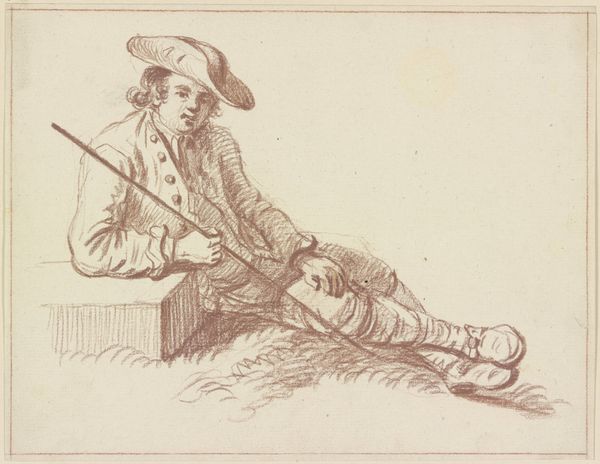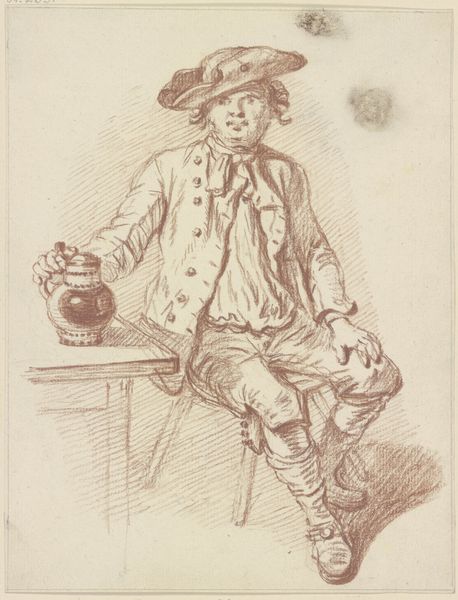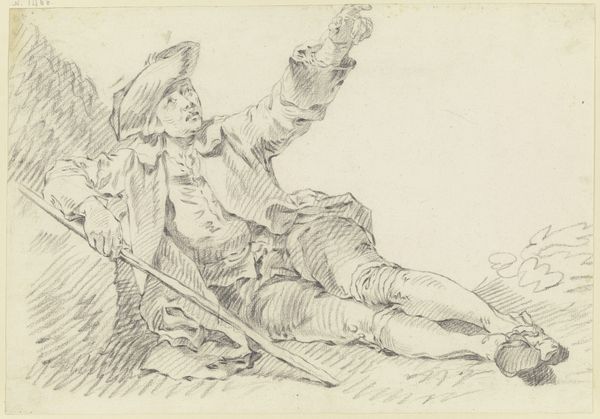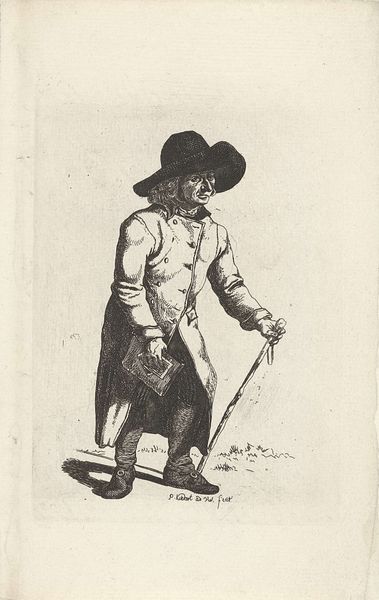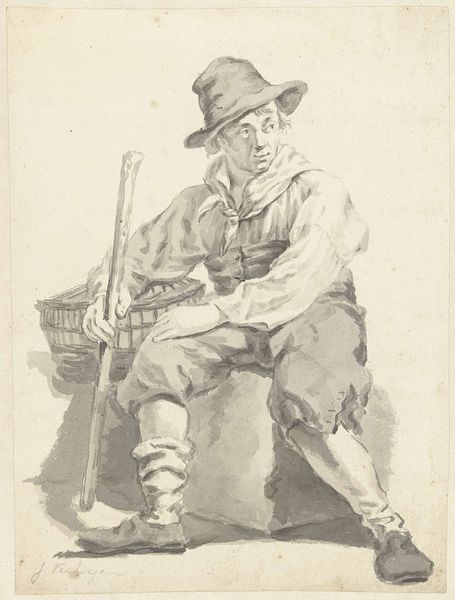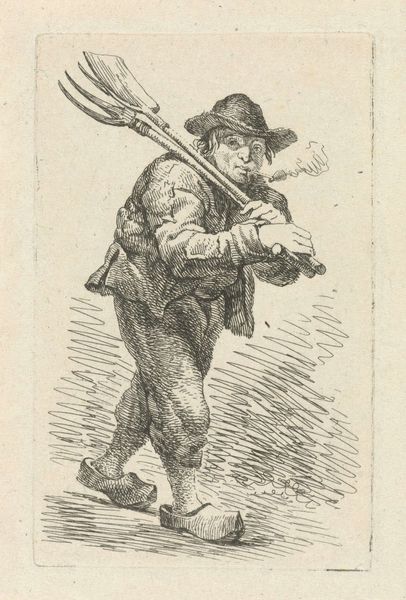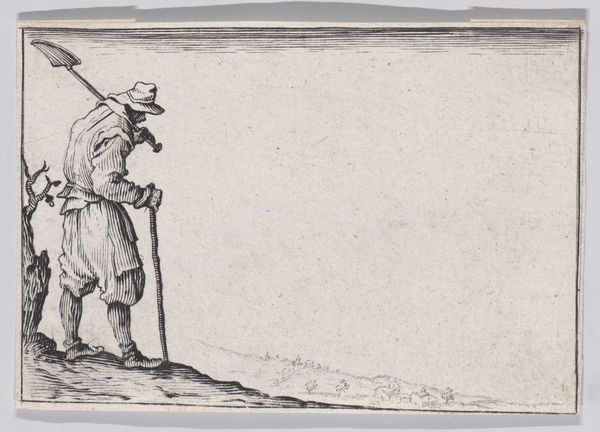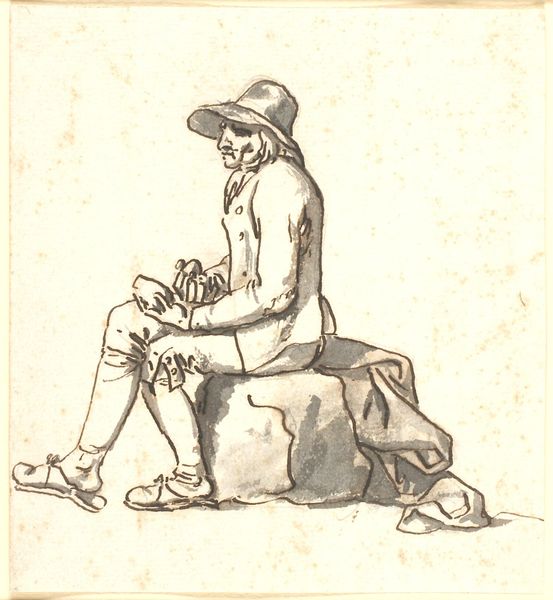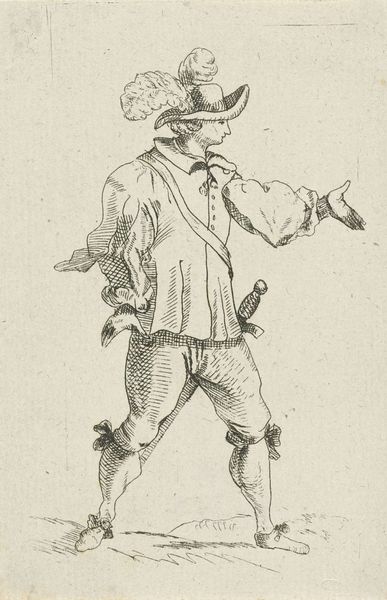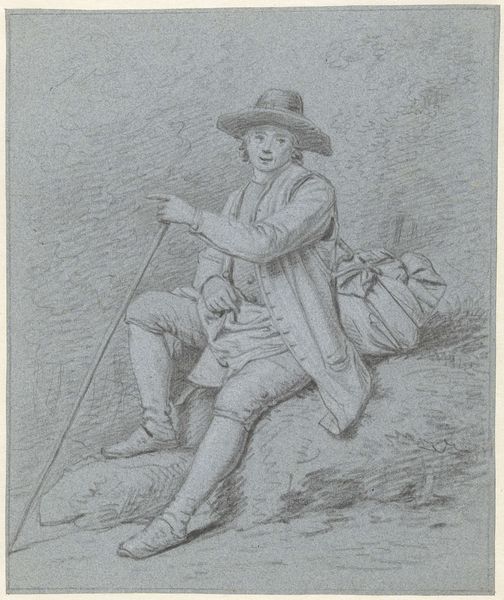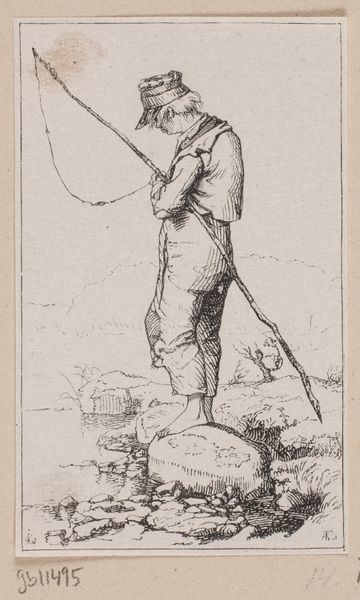
drawing, red-chalk, chalk
#
portrait
#
drawing
#
red-chalk
#
caricature
#
chalk
#
15_18th-century
#
portrait drawing
Copyright: Public Domain
Curator: Welcome. Before us is Friedrich Wilhelm Hirt's "Sitzendes bekleidetes männliches Modell", housed here at the Städel Museum. Editor: I'm immediately struck by the color. It's executed in red chalk, giving the whole scene a warm, almost sepia-toned, antiquated feeling. There is also something humorous in it, something askew. Curator: It’s intriguing, isn't it? Hirt was active in the late 18th century, a time when the lines between portraiture and caricature were becoming increasingly blurred, often used to subtly critique social standings through carefully considered depictions. The use of chalk drawings in educational and professional circles also granted artworks certain functions. Editor: Absolutely, and I think the material itself—red chalk—adds to that reading. It speaks to the workshop, to process, and maybe even to a quick study from life. It makes me wonder about the sitter; a day laborer perhaps taking a rest? I feel like there’s such accessibility that the work's process provides to me. Curator: The subject’s pose, leaning on a walking stick with a nonchalant air, while also appearing very working class, certainly speaks to that. Note the details in the rendering of his garment as opposed to the stone block upon which he is relaxing— it is difficult not to think of social portraiture designed to be read and decoded in particular ways by contemporary audiences. Editor: Precisely! And this red chalk really enhances the textures, doesn't it? You can almost feel the roughspun fabric of his clothing. To consider its social role further, you wonder how the texture might've emphasized or idealized the material realities it presents. Curator: The relative softness of the chalk is in contrast with the reality of labour. Hirt skillfully used it to depict a moment of repose, yes, but it also allowed him to subtly comment on the sitter's place within the broader social hierarchy. Editor: And how these seemingly informal depictions solidify social meaning! It underscores the vital role art plays in mediating social and economic realities, making us reassess our assumptions about the value we place on materiality and class presentation. Curator: A pertinent reminder of how even seemingly simple studies can reveal profound social and historical insights. Editor: Definitely gives me much to consider about art-making processes and its subjects in the 1700's!
Comments
No comments
Be the first to comment and join the conversation on the ultimate creative platform.
